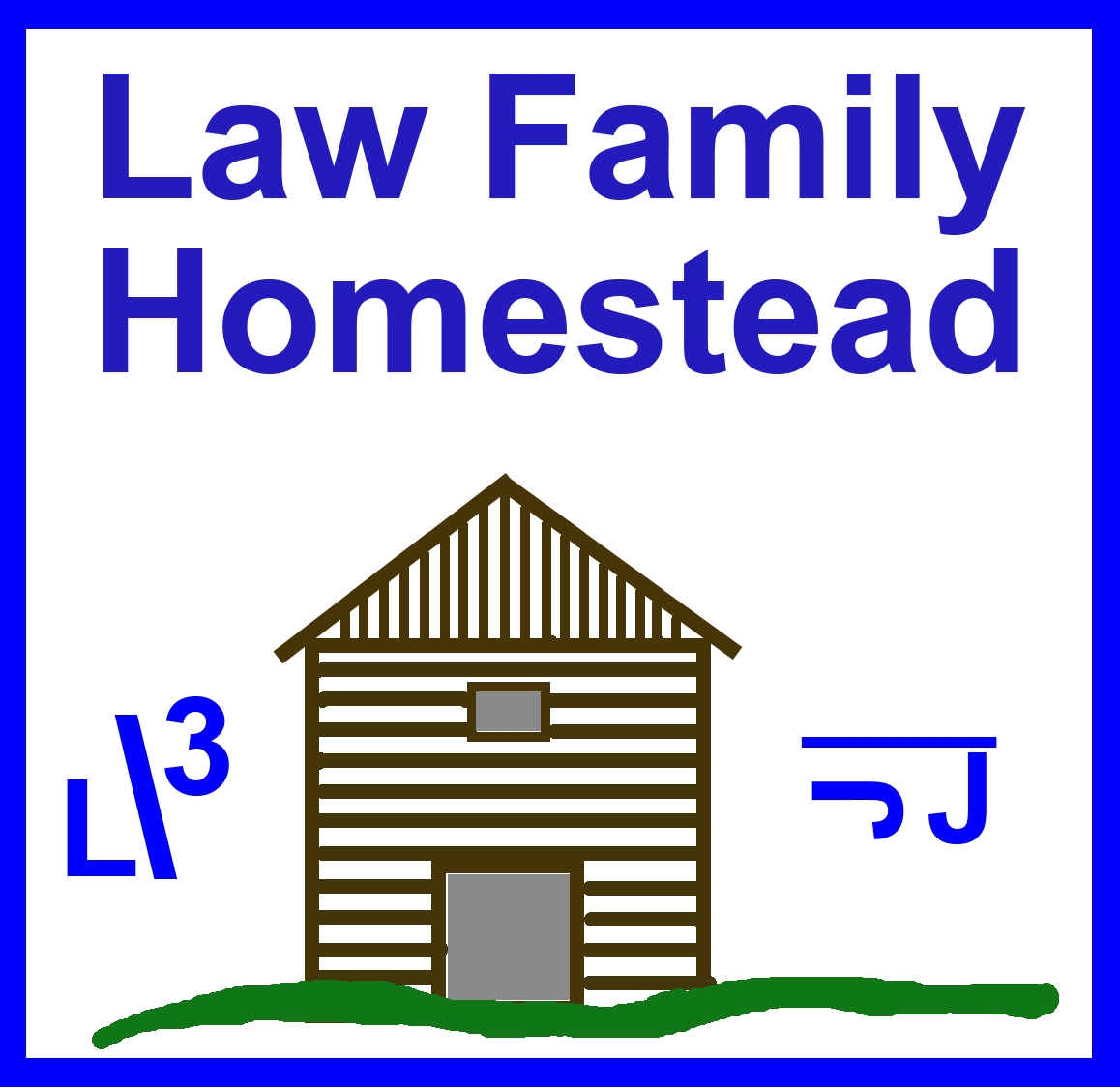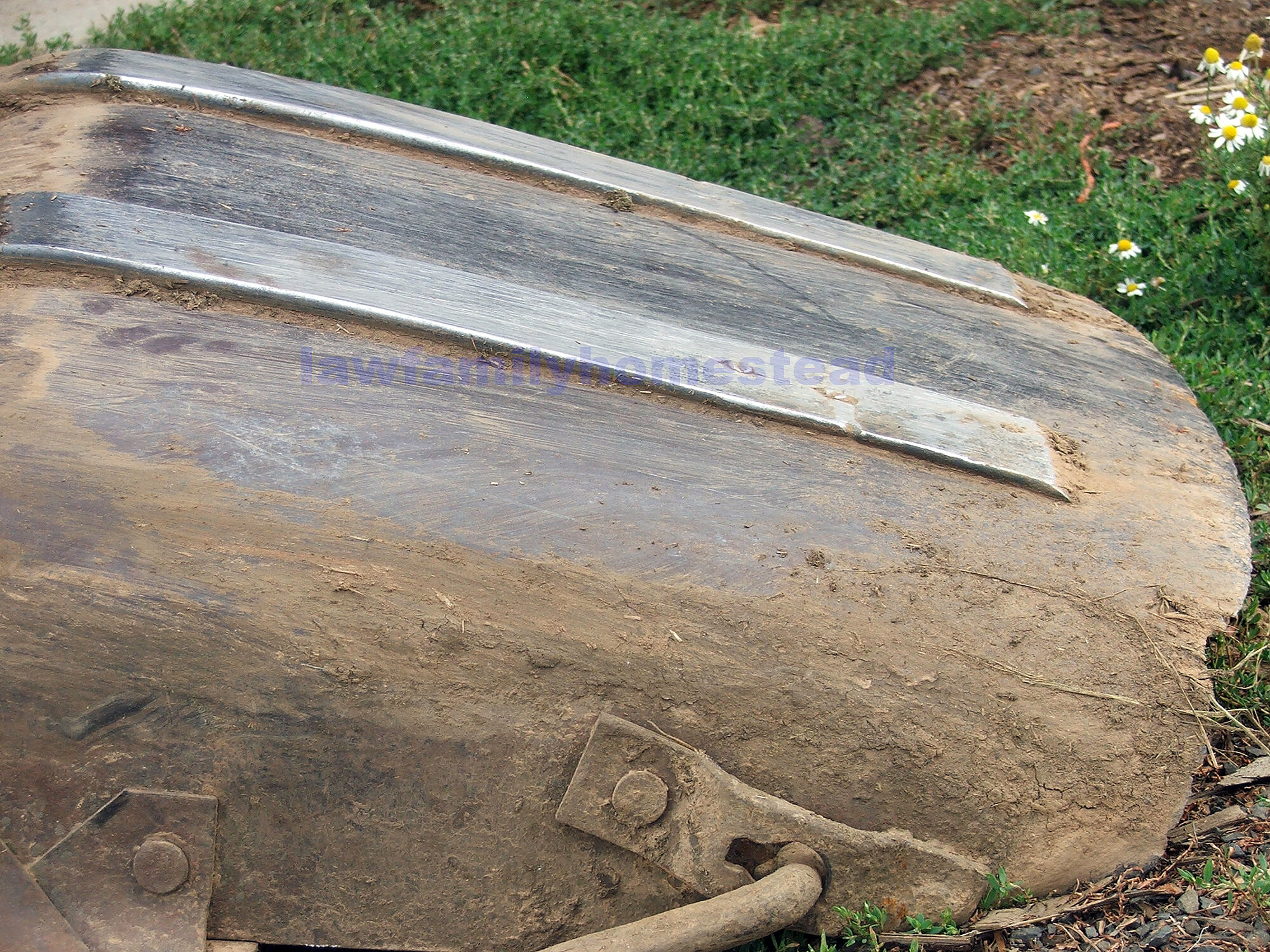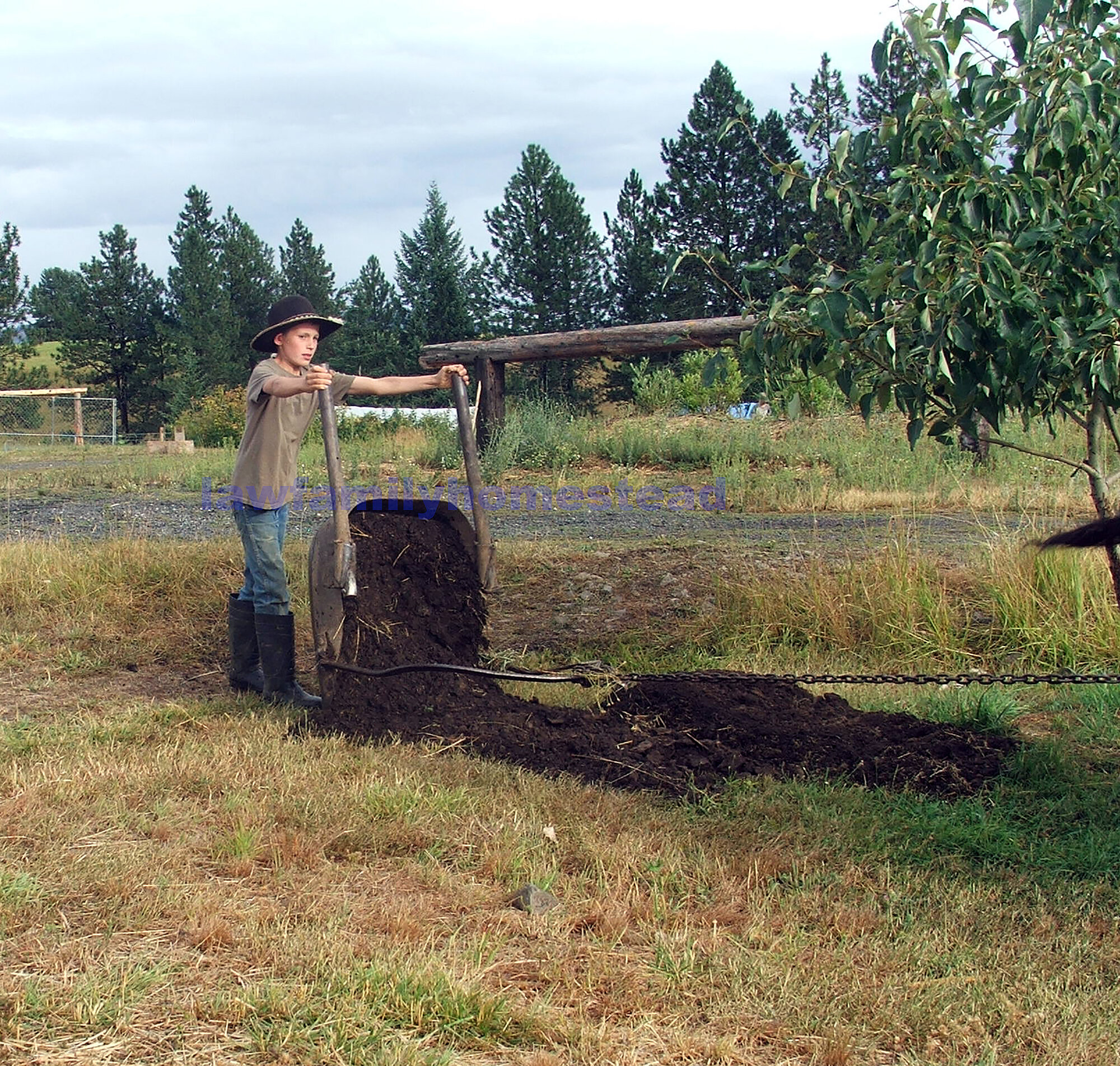I mentioned at the close of last winter that I had some ideas to keep the ox team earning its keep throughout the spring. Not that they haven't endeared themselves to me already by hauling six cords of firewood out of our woodlot without me having to lift a finger. Having the ox team haul the loads of firewood made a hard job "fun" for all the boys.
A spring chore that I insist the boys help me with is shoveling out the winter build up of "compost" from the corral for use on our garden. This entails the use of shovels, a wheelbarrow and the willpower to conduct a full body workout for hours on end. Pretty sure that anybody who lives on their own homestead doesn't bother to own a gym membership!
There is also a bit of guess work involved in filling the wheelbarrow. If the "compost" is too wet from recent rains we must remember not to "fill" the wheelbarrow, because we won't be able to budge it from the corral, let alone push it uphill over rough terrain, across the driveway and down the garden rows. If the "compost" is dry, then it's tempting to get overconfident and fill it more than is healthy. While the boy's are big enough to wield a shovel, and push a wheelbarrow, one loaded with compost is still beyond even the oldest one, which means that job usually falls to me, with Kit taking his turn when he is home. The question always seems to be which will be "finished" first, the boys, me, or the garden row.
During the winter months we spend time in the evenings reading history in one form or another to the boys before they go to bed. This winter I found a few books about oxen that we read, and one of them introduced us to the term slip scraper or buck scraper.
Researching the tool we found that, in very simple English, it is a large scoop-shovel with two handles that may be pulled with either oxen or horses, and is what was used long ago to build cellars, roads, and move dirt. We were pretty convinced that if a buck scraper could do all of that, it could most certainly be used on the homestead to move compost from the corral to my garden with a lot less effort for all of us, except maybe the oxen, but that is their job!
So the search began for this antique piece of equipment. I searched state by state far and wide to see if I could find it anywhere. I even changed my terminology a few times to see if that would help. Finally after a bit of searching we found an old buck scraper 75 miles away in a direction we were already traveling. What luck! CW was ecstatic. We set up an appointment to go see it. Kit looked it over and determined that while it did show a good bit of wear and needed some repair work, it was nothing that wasn't within the scope of his skill in the blacksmith shop. So we brought it home. CW wanted to try it out that night, but daddy wanted to wait until some modifications could be made before they ran it across the gravel driveway.
It took a few days but CW finally convinced daddy that they should really try out the scraper to get a better idea of how it functioned before repairs were made. So we got the camera out to record this momentous occasion. The ox team hadn't been worked for a few weeks due to rainy weather, so a few runs up the hill hauling firewood took the edge off their energy level and they were more willing to listen in the tighter confines of the corral and my garden area.
The shovel is pulled along flat on the ground when in transit whether full or empty.
Once it is ready to be filled the handles are lifted ever so slightly so the cutting edge digs into the ground as the oxen walk forward and the material is "scooped" inside.
Once filled to the desired fullness the handles are returned to their normal position and the oxen continue forward pulling the now loaded shovel to its final dumping place. When we got to the garden beds it took a bit of work to line the oxen and the slip scraper up with the top of the beds so it could be emptied. Once lined up the team pulled the scraper forward until the right spot was reached, then the handles of the scraper are once again brought into use by quickly lifting them all the way up until the cutting edge catches as the team continues forward and the whole shovel flips upside down and dumps the load. The scraper then sort of smoothes out the load as the team continues walking forward. After we tried a couple loads daddy said we had to put it up until repairs were made, so we did not harm it by dragging it loaded across our gravel driveway.
On the original design there appeared to be metal straps, kind of like a skid plate, on the bottom side of the shovel that it actually rides on so that the shovel itself is not worn away. Ours didn't have those, but we could see where they must have been attached at one time. It looked as if they were made so they could be replaced when needed. Kit wanted to get those skid plates on before we used the shovel extensively.
So he spent a few hours one afternoon and fashioned the two skid plates out of an old Ford leaf spring we had lying around.
We couldn't help but leave the Ford emblem on them. If Ford only knew what their old leaf springs were doing now!
Skid plates on and ready for use. Kit beveled the front of the plates so they won't catch on anything, and then annealed each plate, drilled holes, and threaded bolts so if we ever wear them out they can be unbolted and replaced with a new set of plates.
After the skid plates were on, we decided the scraper could be put to work since we were only using it to scoop up composted manure and there were no rocks in it that could further damage the cutting edge. So we tried it out for a couple days.
After trying a few different methods, we chose one, the oxen were convinced it was the best way, and the manure hauling session was in full swing. We did a time motion study one day to calculate how much dirt the oxen could move over a 100-yard distance and back. We found they could make a complete circuit in four to five minutes.
One day we hauled 45 loads of composted manure to four garden beds, Two of them 75 feet long and two 50 feet long. We let the oxen rest about every 12 to 15 loads or once per hour. Both boy and beast were ready to quit by the end of four hours. The oxen having some time off from their winter sled hauling routine, combined with warmer late spring weather affected their endurance some. So we did not push them any further that day.
We were curious as to the amount the scraper could hold, so we filled it up and shoveled it into the wheel barrel that we usually use for this job to see how it would compare. We were surprised. A fully loaded slip scraper will fill the wheel barrel nicely. And it doesn't matter to the oxen whether or not it is wet or dry. It was definitely heavier then I wanted to push out of the corral, especially since some of it was on the wetter side!
A shovel full or scraper full, take your pick! Pretty sure CW is sold on the scraper!
Organic potting soil by the "wheel barrel" load. Yet another byproduct of the family milk cow, delivered to the job site by another by product, her offspring, the oxen.
Since our initial use of the scraper to prepare the garden beds for planting this spring, we haven't used it as much as we would have liked, due to baby VAR joining us. So we hauled it out the other day to get some missing pics for this post.
We couldn't haul to the garden area due to growing plants and thanks to the marauding and scratching chickens, who have forced the fencing of the garden. So I came up with another idea.
Why not mulch the fruit trees? I've been wanting to get fertilizer and mulch around them for some time.
So we hooked the team up again, and after a little lesson review they were ready for work. Here CW is getting ready to flip the shovel up to dump it, when the proper position is reached.
While it doesn't require a lot of lift, it does require some and this load was heavy.
Once that front edge catches and the oxen keep walking forward it flips fast. I had to have them do it a few times so I could actually catch the scraper as it was coming over.
And over it goes. The weight of the scraper smooths out the load as the oxen continue forward.
Surveying the job, it was not quite as close to the cottonwood tree as I was hoping for, but it was closer then the corral.
But about five minutes with a flat tipped shovel, and the results were very impressive. We are definitely doing this with the rest of our young trees. Since we had been dodging thunderstorms to get these pictures, we figured we'd better stop while we were ahead.
Had to share a couple photos of the ox team. Don't they look awesome? They've been on pasture and have really put the weight on.
Can't wait until we can get them back out and use them again. The guys are really looking forward to putting them back to work this fall. I think we will tune them up hauling the compost to my trees and garden before they go to the woods.
That's all you need folks, and a length of logging chain!
With the cost of gas, parts and tires now days for tractors, this picture should be considered a viable option for the modern day young homesteader who needs to invest nearly all his capitol in land and chooses to remain free of debt. The total value of the items in the above picture is less then $600 dollars. The oxen, a product of the family milk cow, runs it, he lives off of a free renewable resource, converts it to muscle and manure and then takes that muscle and spreads that manure on our garden and trees and fields to return the nutrients back into the ground from which it was taken in the first place. The first half dozen years of his life, he will only appreciate in value as he continues to grow and is worked into fine condition. And don't forget the great family training event this can be. With every venture we include our children. The educational opportunity is outstanding. We want a family-friendly farm, where family, friends, and customers may come, stroll around the place, and enjoy the atmosphere while sharing new ideas.


























